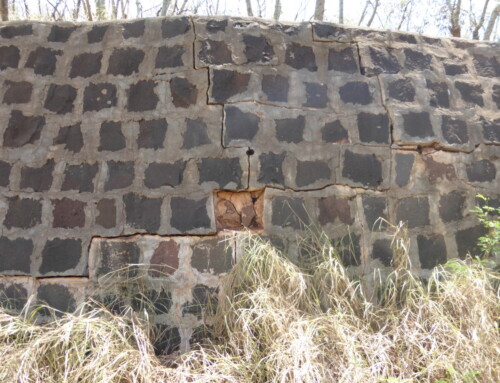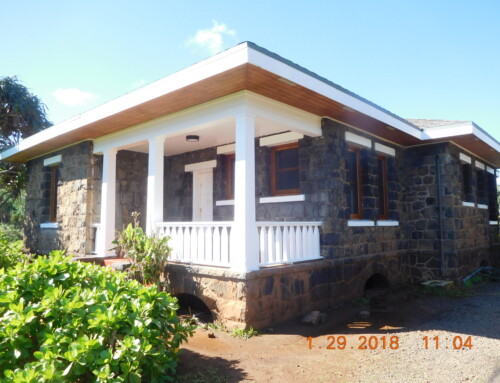By Angie Westfall, Architectural Branch Chief, State Historic Preservation Division
The State Historic Preservation Division (SHPD) is mandated by Hawaii Revised Statute 6E “to provide leadership in preserving, restoring, and maintaining historic and cultural property…” As part of this requirement, HRS 6E-42 says that before any agency or officer of the State approves a permit for any project which may affect historic resources (defined by the State as “any building, structure, object, district, area, or site, including heiau and underwater site, which is over fifty years old”), the permitting agency must allow SHPD an opportunity for review and comment on the effect of the proposed project on historic properties.
In order to complete these required reviews for structures; SHPD requests photos and plans for the proposed projects. Guidelines for these submittals may be obtained from the SHPD website or county planning and permitting departments. http://hawaii.gov/dlnr/shpd/architecture/SHPD-6E-Form.pdf
When doing the architectural review SHPD staff first looks at the submitted photos with the goal of determining whether the property is potentially eligible for listing on the Hawaii and/or National Register of Historic Places. The National Register Criteria for Evaluation guides this determination and looks at age, integrity, and significance:
- Age: Although nationally the 50-year age mark is only a guideline, in Hawaii it is the legal trigger established by the 6E Statute and the criteria permitting agencies use when determining which projects require SHPD review.
- Integrity simply means does it still look much the way it did in the past; would a person familiar with the resource during its period of significance still recognize it.
- Significance refers to whether the property is associated with events, activities, or developments that were important in the past; with the lives of people who were important in the past; and or with significant architectural history, landscape history, or engineering achievements. Historic significance is not limited to grand architectural structures or major feats of engineering. Vernacular, traditional, and regional built forms are equally important to a locale’s historic character and sense of place—and therefore eligible for listing.
See http://www.nps.gov/nr/publications/bulletins/nrb15/nrb15_2.htm
In SHPD’s evaluation of submitted properties, the seven aspects of integrity are taken into consideration: Location Design, Setting, Materials, Workmanship, Feeling, and Association. To retain its integrity and be potentially eligible for listing on the Hawaii or National Register of Historic Places, a property should possess most of these aspects. See http://www.nps.gov/history/nr/publications/bulletins/nrb15/nrb15_8.htm#sevenaspects
If, after reviewing the submitted photographs and materials and sometimes doing additional research, a property is determined eligible for the State or National Register of Historic Places, SHPD then reviews the proposed project to assess whether the project causes adverse effects to the integrity and significance of the property.
It is at this point SHPD generates the required comment response to the permitting agencies. If the property is deemed ineligible or if the project has no adverse effects, the process is complete; if the proposed project will lessen the historic integrity of the historic property, SHPD will request measures to avoid, minimize or mitigate the effect.





